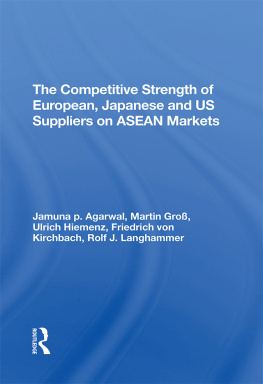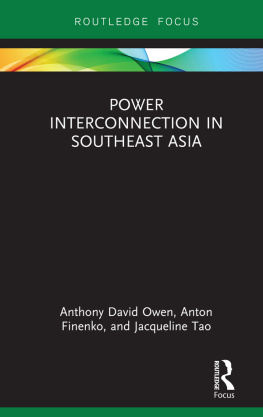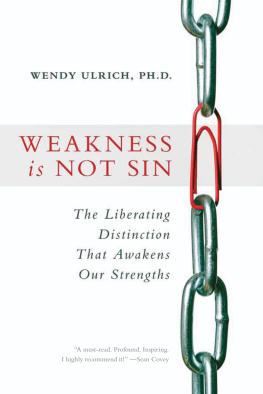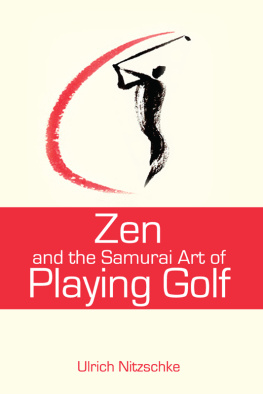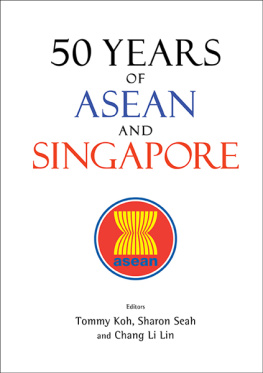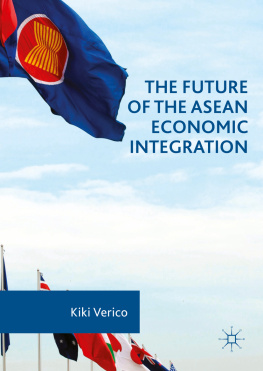Ulrich Hiemenz - The Competitive Strength of European, Japanese, and U.S. Suppliers on ASEAN Markets
Here you can read online Ulrich Hiemenz - The Competitive Strength of European, Japanese, and U.S. Suppliers on ASEAN Markets full text of the book (entire story) in english for free. Download pdf and epub, get meaning, cover and reviews about this ebook. year: 2019, publisher: Routledge, genre: Politics. Description of the work, (preface) as well as reviews are available. Best literature library LitArk.com created for fans of good reading and offers a wide selection of genres:
Romance novel
Science fiction
Adventure
Detective
Science
History
Home and family
Prose
Art
Politics
Computer
Non-fiction
Religion
Business
Children
Humor
Choose a favorite category and find really read worthwhile books. Enjoy immersion in the world of imagination, feel the emotions of the characters or learn something new for yourself, make an fascinating discovery.
- Book:The Competitive Strength of European, Japanese, and U.S. Suppliers on ASEAN Markets
- Author:
- Publisher:Routledge
- Genre:
- Year:2019
- Rating:5 / 5
- Favourites:Add to favourites
- Your mark:
- 100
- 1
- 2
- 3
- 4
- 5
The Competitive Strength of European, Japanese, and U.S. Suppliers on ASEAN Markets: summary, description and annotation
We offer to read an annotation, description, summary or preface (depends on what the author of the book "The Competitive Strength of European, Japanese, and U.S. Suppliers on ASEAN Markets" wrote himself). If you haven't found the necessary information about the book — write in the comments, we will try to find it.
Ulrich Hiemenz: author's other books
Who wrote The Competitive Strength of European, Japanese, and U.S. Suppliers on ASEAN Markets? Find out the surname, the name of the author of the book and a list of all author's works by series.
The Competitive Strength of European, Japanese, and U.S. Suppliers on ASEAN Markets — read online for free the complete book (whole text) full work
Below is the text of the book, divided by pages. System saving the place of the last page read, allows you to conveniently read the book "The Competitive Strength of European, Japanese, and U.S. Suppliers on ASEAN Markets" online for free, without having to search again every time where you left off. Put a bookmark, and you can go to the page where you finished reading at any time.
Font size:
Interval:
Bookmark:
Jamuna P. Agarwal, Martin Gro, Ulrich Hiemenz, Friedrich von Kirchbach, Rolf J. Langhammer

52 Vanderbilt Avenue, New York, NY 10017
2 Park Square, Milton Park, Abingdon, Oxon OX14 4RN
Product or corporate names may be trademarks or registered trademarks, and are used only for identification and explanation without intent to infringe.
The competitive strength of European, Japanese and
US suppliers on ASEAN markets/Ulrich Hiemenz...
Tbingen: Mohr, 1987.
(Kieler Studien; 211)
ISBN 3-16-345283-3 brosch.
ISBN 3-16-345284-1 Gewebe
NE: Hiemenz, Ulrich [Mitverf.]; GT
- ASEAN Association of Southeast Asian Nations
- BIAC Business and Industry Advisory Committee to OECD
- BMWi Bundesministerium fr Wirtschaft
- BMZ Bundesministerium fur wirtschaftliche Zusammenarbeit
- BTN Brussels Tariff Nomenclature
- cif cost, insurance, freight
- CIME Committee on International Investment and Multinational Enterprises
- COCOM Coordinating Committee for East-West Trade Policy Dept. Department
- EC European Communities
- ECE UN Economic Commission for Europe
- EEC European Economic Community
- EFTA European Free Trade Association
- EMS European Monetary System
- ESCAP UN Economic and Social Commission for Asia and the Pacific
- EUROSTAT Statistical Office of the European Communities
- FDI Foreign Direct Investment
- fob free on board
- GATT General Agreement on Tariffs and Trade
- GDP Gross Domestic Product
- GDR German Democratic Republic
- GNP Gross National Product
- IDE Institute for Developing Economies
- IMF International Monetary Fund
- LDCs Less Developed Countries
- LLDCs Least Developed Countries
- MFA Multi-Fibre Agreement
- MITI Ministry of International Trade and Industry (Japan)
- MOFA Majority-Owned Foreign Affiliate
- NICs Newly Industrializing Countries
- ODA Overseas Development Assistance
- OECD Organisation for Economic Co-operation and Development
- OECF Overseas Economic Cooperation Fund (Japan)
- OPIC Overseas Private Investment Corporation
- RCA Revealed Comparative Advantage
- SITC Standard International Trade Classification
- UK United Kingdom
- US United States
- US AID US Agency for International Development
- USSR Soviet Union
- UN United Nations
- UNCTAD UN Conference on Trade and Development
- UNCTC UN Centre of Transnational Corporations
Font size:
Interval:
Bookmark:
Similar books «The Competitive Strength of European, Japanese, and U.S. Suppliers on ASEAN Markets»
Look at similar books to The Competitive Strength of European, Japanese, and U.S. Suppliers on ASEAN Markets. We have selected literature similar in name and meaning in the hope of providing readers with more options to find new, interesting, not yet read works.
Discussion, reviews of the book The Competitive Strength of European, Japanese, and U.S. Suppliers on ASEAN Markets and just readers' own opinions. Leave your comments, write what you think about the work, its meaning or the main characters. Specify what exactly you liked and what you didn't like, and why you think so.

